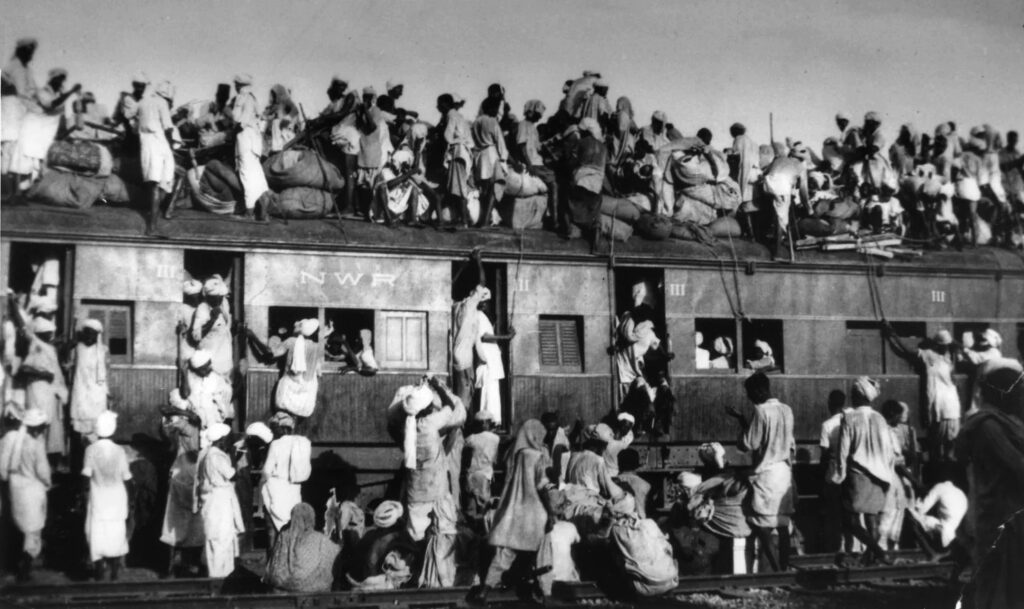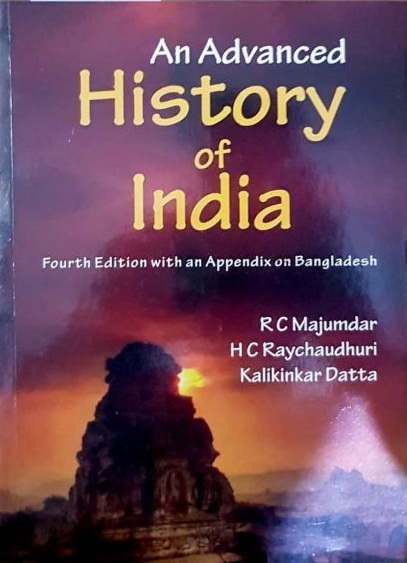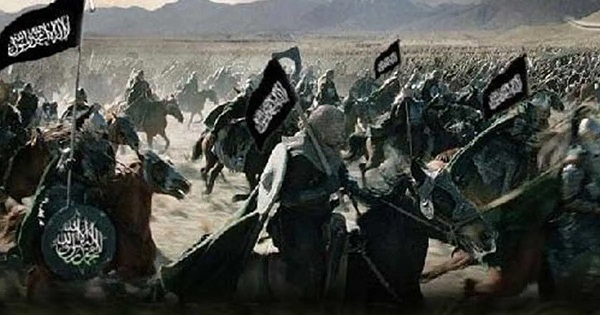
The People of India at large, in their collective conscience, have forgotten the history and significant events that unfolded in the making of the modern Indian Republic. They have forgotten the communal travesties caused by the partition, unleashed by the forces fighting for the establishment of an Islamic state. The CAA legislation is a delayed justice to a historical genocide that broke the cultural and civilizational unity of Bharat and amputated it into an acronym called Pakistan. Their Ghazwa-e-hind doctrine and the deep state have a sole purpose, which is to destroy India!! and thereby the venerable Sanatana Dharma civilization in total. If one needs to understand this destructive Pakistani-Islamist phenomenon, knowing the broad outline of the origins of two-nation theory, history and travesty of the partition of India, and the ideological foundations of the first modern Islamic state, “The Islamic Republic of Pakistan” is a must.
History and politics of partition
(Excerpts from historian RC Majumdar’s Advanced History of India)

Throughout the process of negotiations that went in the formation of modern India and the two-nation theory, with its separatist nature and communal character, life was made miserable to the people. Not just the communal harmony got disrupted massively, but even the fundamental existence became extremely hostile. Mohammed Ali Jinnah repudiated “the democratic system of parliamentary government on the conception of a homogeneous nation and the method of counting heads” as impossible in India, and publicly expressed the view that neither minority safeguards nor separate electorates could have the Muslim from the congress raj, at the centre. When the Congress ministries in the provinces resigned, the Muslim League observed a day of deliverance and thanksgiving throughout India.
In January 1940, Mr Jinnah declared that the Hindus and Muslims formed two separate nations “who both must share the governance of their common motherland”. Three months later, in the Lahore Session of the Muslim League ( March 1940 ), he declared that the Muslim nation must have a separate independent state. In other words, he now advocated the establishment of Pakistan or a federation of the Punjab, North-West frontier or Afghan province, Kashmir, Sindh and Baluchistan in a sovereign state. The idea had been first brought into prominence by a group of young Muslims at the time of the round table conference, but had found no support, and was characterised by Muslim leaders as ” a student scheme “, “chimerical and impracticable “. Even the modified proposal of Sir Muhammad Iqbal for a loose federation of Pakistan, comprising one or two Muslim states, with the rest of India, first made in 1930, and repeated in 1939, had not been widely accepted. The idea of Pakistan as a sovereign state was revived by Mr Jinnah and formally endorsed by the Muslim League in 1940. From that date, all attempts at reconciliation between the congress and the League foundered on this issue of Pakistan. The government could also now plausibly refuse the congress demand for a national government on the ground that the Muslims were opposed to it.
On 19th February 1946, British Prime Minister Clement Atlee announced that three members of the Cabinet would visit India ” to promote, in conjunction with the leaders of Indian opinion, the early realization of full self-government in India.” Later, on 15th March, he referred to complete Independence as a possible goal of Indian constitutional development, if Indians so chose. The cabinet mission arrived at Delhi in March 1946 and held a series of conferences with the leaders of the Congress and the league. As no agreement was possible between them, the Mission issued a statement on 16th May 1946, giving in broad outline their idea of the future government of India and laying down the procedure for framing a detailed constitution.
The Cabinet Mission recommended a federal type of government for the whole of India including the States. The Federal Government would deal with Foreign Affairs, Defence and Communication, and the other powers would be vested in the provinces and states. British India was to be divided into three groups of provinces; one comprising Punjab, the North-West Frontier Province, Sindh and Balochistan; a second comprising Bengal and Assam; and the third the rest of India. The Union Constitution was to be framed by a constituent assembly of 296 members elected on Assemblies, and the representatives of States which joined the Union, while the representatives of the three groups of provinces were to meet separately to draw up the constitution of the Provinces in each group. Each Province was given the right to opt out of the Federal Union after the first election of its Legislative council under the new constitution. The Cabinet Mission further recommended the establishment of an interim National Government by the reconstruction of the Viceroy’s Executive Council from among the leaders of the different parties.
On 6th June, the Muslim League accepted the Cabinet Mission’s proposals reiterating that the attainment of the goal of a complete sovereign Pakistan still reminds the unalterable objective of the Muslims in India. The Congress rejected the Viceroy’s Proposal for an interim Government but agreed to participate in the Constituent Assembly to frame the Construction. The Cabinet Mission left India on 29th June. The Muslim League demanded that the Viceroy should proceed with his scheme for an interim Government even though Congress would not take part in it. This the Viceroy refused to do, for he had already declared that it was to be a Government of all the Parties who had accepted the Cabinet Mission’s plan. There were also sharp differences between the Muslim League and Congress over the interpretation of the cabinet Mission’s plan.
After a somewhat acrimonious controversy, the Muslim League formally withdrew its acceptance of the Cabinet Mission’s plan. The Viceroy thereupon, by his previous declaration, reconstituted his Executive Council without any representatives of the League. This complete triumph of the Congress provoked a violent reaction among separatist Muslims, and the Muslim League fixed upon 16th August 1946, as the day of ” Direct Action.” On that day, while some of the supporters of the League contented themselves with demonstrations of a peaceful type, a rowdy section in Calcutta got completely out of control. Many Hindus were killed and their houses and shops were looted and burnt. Soon the Hindus retaliated and for several days, the streets of Calcutta were the scene of communal riots of the worst type. Neither the League Ministry nor the governor and the Viceroy, who was ultimately responsible for law and order, miserably failed to take adequate steps to stop the Hideous violence there disgraced the name of the first city of modern India.
The Executive Council of the Viceroy, under the guidance of Pandit Nehru, worked as a cabinet and changed the whole spirit and outlook of the Indian government. Lord Wavell, whose power thus became almost non-existent, now sought to bring in the League members as a counterpoise in the name of communal parity. He told Pandit Nehru that the league had agreed to join the Constituent Assembly, and reconstituted the Executive Council by including the members of that organisation. The introduction of this new element destroyed the team spirit of the Council, as the League members openly repudiated the Idea of collective responsibility. What was worse, the League did not join the Constituent Assembly, and Mr Jinnah made the startling disclosure that it had never agreed to do so. It was an awkward situation for the Viceroy, and the British Government did nothing to improve it when it declared, on 6th December, that if the Muslim League did not join the Constituent Assembly, the decision of this body could not be implemented by the British Government, so far at least as it affected the Provinces with a Muslim majority. Nevertheless, the Constituent Assembly met on 9th December 1946, without the members of the League. The tense atmosphere continued till 20th February 1947, when the British Government made an important announcement of the policy. It declared its intention to quit India by June 1948 and appointed Lord Mountbatten as Viceroy of India to arrange for the transfer of authority from British to Indian hands.
This momentous proclamation evoked hearty enthusiasm all over India, save in the ranks of the Muslim League, which once the Punjab and soon extended to the North-West Frontier Province, and lootings, arson, murder, and the violence occurred on a large scale over a wide area. These successive communal outbreaks had a very unfortunate consequence. The Hindu and Sikhs, who had hitherto been strongly in favour of a United India, now gradually came to realise its impracticability, and demanded the partition of Punjab and Bengal if Muslims refused to join the Constituent Assembly.
Lord Mountbatten assumed office as Viceroy on 24th March 1947, and on 3rd June broadcast the famous declaration laying down ” the method by which power will be transferred from British to Indian Hands”. The main points of this new policy may be summed up as follows:
- If the areas with a majority of Muslim population so desired, they should be allowed to form a separate Dominion, and a new Constituent Assembly would be set up for that purpose. But in that case, there would be a partition of Bengal and Punjab if the representatives of Hindu majority districts in the Legislatures of those Provinces so desired.
- A referendum would be taken in the North-West Frontier Province to ascertain whether it should join Pakistan or not.
- The district of Sylhet would be joined to the Muslim area in Bengal after the views of the people had been ascertained by a referendum.
- Boundary Commissions would be set up to define the boundaries of Hindu and Muslim Provinces in Bengal and Punjab.
- The legislation would be introduced in the current session of the Parliament for immediately conferring Dominion status on India ( or the two Dominions if the partition is decided upon), without any prejudice to the final decisions of the Constituent Assembly ( or Assemblies) in this respect.
This historic pronouncement was received with mixed feelings by the public. The Hindus and nationalists of all persuasions deplored the vivisection of India, while the Muslims of the League were not fully satisfied with the “truncated and moth-eaten Pakistan”, as Mr Jinnah once described it.
It was, however, generally agreed that the new scheme offered the Best practicable solution of the Indian problem, so far as it could be envisaged, and the partition of Punjab and Bengal Government, with Sir Cyril Radcliffe as Chairman of both. The Indian independence Bill, passed by the British Parliament on 1st July 1947, without any dissent, fixed upon 15th august, as the date of transfer of Authority. Accordingly, at midnight on 14-15th August, a special session of the Constituent Assembly was held in Delhi. It solemnly declared the independence of India as a part of the British Commonwealth and appointed Lord Mountbatten the first Governor-General of the new Indian Dominion. Mr Jinnah was chosen as the first Governor-General of Pakistan, which soon took steps to summon its own Constituent Assembly.
( Partition and its aftermath is believed to have killed close to 9 lakh people, and created about 2.5 crores of refugees and displaced people )
The Doctrine of Ghazwa-e-Hind

Pakistan strongly believes and espouses the doctrine of Ghazwa-e-hind, which means the end of Hindu civilization, and the establishment of the Islamic State in Hindustan or India. Supposedly in one of the controversial Hadiz of Islamic theology, there is a mention of Ghazwa-e-Hind, Gazwa, in Islamic parlance, is a holy war led by the Prophet himself, which means it has a complete sanction to be sacred by the virtue of Allah. In that specific hadiz, it is supposedly mentioned that to attain “qaum-e-qayamat” which means the end of times or establishment of peace, two armies would head in two specific directions, one towards Rome, i.e. Modern Europe and another towards Hind, which is India. The army headed for European destruction is ISIS( Islamic State of Iraq and Syria) and the the second army must be the Pakistani State is the belief that is vehemently indoctrinated into most Pakistan, and only after this process is complete, the Muslims will receive a permanent seat in Jannat ( heaven). Clerics in Pakistan constantly preach through their sermons and fatwas, that ” Pakistanis should consider themselves fortunate that Allah has bestowed the honour to wage the war against India to them”. ” The genesis of Pakistan was prophesied to defeat India and Hinduism at the hands of Pakistan”. When a country has waged war 4 times officially, occupied Half of Kashmir’s territory illegally has amputated, punctured, bled and continues to bleed India, constantly through its proxies and non-state actors, we are talking about establishing peace with them, and have become frustrated and ham-stringed with our own efforts. So it’s not a paradoxical state of nature, that India is unable to come to terms with, but with the dichotomy of peddling with our own modern democratic nation-state, and the medieval theocratic feudal state across the western border, which aims to destroy the former.
Swadeshi Muslims and primacy of the Indian Identity
In the protests that took place across the country opposing the CAA legislation, especially the Muslim crowds gathered with a great deal of patriotism and nationalist symbolism, which indeed was a moment of great pride for the entire nation. But large group of people were also seen shouting slogans of “Tera Mera rishta kya la ilaha illa allah” ” Tera Mera rishta kya, la ilaha illallah” “say it in the barricade, say it in the lathi charge la ilaha illa allah”. These malicious slogans cause alarming concerns, to the unity of Bharat and sometimes remind of the ideological and theological past of the two nation theory, adjoining itself to a pan Islamic Muslim brotherhood like Islamofascism, which in itself obstructs the real spiritualism of Islam. Every progressive modern Indian Muslim, who aspires for a bright, safe and secure future for India must stand in complete solidarity, with the like minded citizens of all other communities, to combat this festering disease of a political pan Islamist ideology. With the venerable philosophical and devotional evolution of Sufism and Indian version of Swadeshi Muslim strand, that include the contributions of legendary personalities like Kabirdas, Dara Shikoh, Quaja Nizamuddin Chisti, Baba Farid, Bulleh Shah and several others, India has the real potential to engage in a civilizational dialogue. We must conduct a nation wide remedial hermeneutics, which aspires for the truth and reconciliation of the psychological and trans-generational traumas of the past experiences. In the absence of such hermeneutics, the contemporary discourse is espousing emotions through blatant communal lines, which continues to broil the historical travesties of a tumultuous past. At this juncture one must introspect reasonably, engaging in a deep intellectual discourse without falling prey to the crass arousals of pugnacious arguments, which achieves nothing but a petty self-goal.
Meanwhile the Indian state agencies, and the informed civil society, needs to ‘up the ante’ in fighting the information warfare against the mighty state of Pakistan. It’s propaganda machinery that operates through every major Embassy in the world through its diplomatic paraphernalia which allies with NGOs, politicians, parliamentarians, Human rights organisations and lobbyists to break down the narrative of India and it’s emerging power. A full-scale diplomatic and informative retaliation through the tools of strategic communications must be employed by India, at the earliest otherwise most of India’s internal issues such as CAA and article 370 would be Internationalised to denigrate India’s global position by Pakistan’s agents, agencies and it’s proxies operating across the world. If one fails to contextualise this nexus of political Islamism, Islamofascism, Sharia-bolshevism, a section of activists and intellectuals obstructionist behaviouralism, and the polemical tendencies of a few politicians of western democracies, it becomes very difficult to decode their hostility towards India. There is a need for every informed individual of this country to rise above the local political arguments and emotional reactionary tendency, to engage and understand the geopolitical, intellectual and national security paradigms.
(The author has an MA in International Studies. Views expressed are author’s own)
Viswapramod is a PhD Scholar at the Department of International Studies and Political Science, Christ University, Bangalore. He has an MA in International Relations. Views expressed are the author’s own.
